Abstract
The bacterial flora of marine animals collected at depths of 570 to 2,446 m was examined for population size and generic composition, and the barotolerant characteristics of selected bacterial isolates were determined. Total numbers of culturable, aerobic, heterotrophic bacteria were found to be low in animals collected at the greatest ocean depths sampled in this study. Vibrio spp. were predominant in 10 of 15 samples examined, and Photobacterium spp. and yeasts were the major components of the remainder. Pseudomonas, Achromobacter, and Flavobacterium spp. comprised minor components of the gut flora of deep-sea fish. Forty-six pure cultures isolated from samples of seven animals were tested for growth or viability after incubation for 1 week under pressures ranging from 100 to 750 atm. Strains of bacteria isolated from samples of fish intestine were more barotolerant than those from the stomach (P<0.01). When incubated at a pressure of 600 atm, viability of bacterial cultures originally isolated from fish caught at a depth of 570 m was significantly decreased in comparison with viability of cultures from animals caught at depths of 1,393 and 2,446 m (P<0.01). From results of this study, it is concluded that the gut microflora of animals that dwell in the deeper regions of the ocean are adapted to an increased hydrostatic pressure environment, that is, the gut microflora is less inhibited by elevated hydrostatic pressure with increasing depth from which the host animal was collected.
Full text
PDF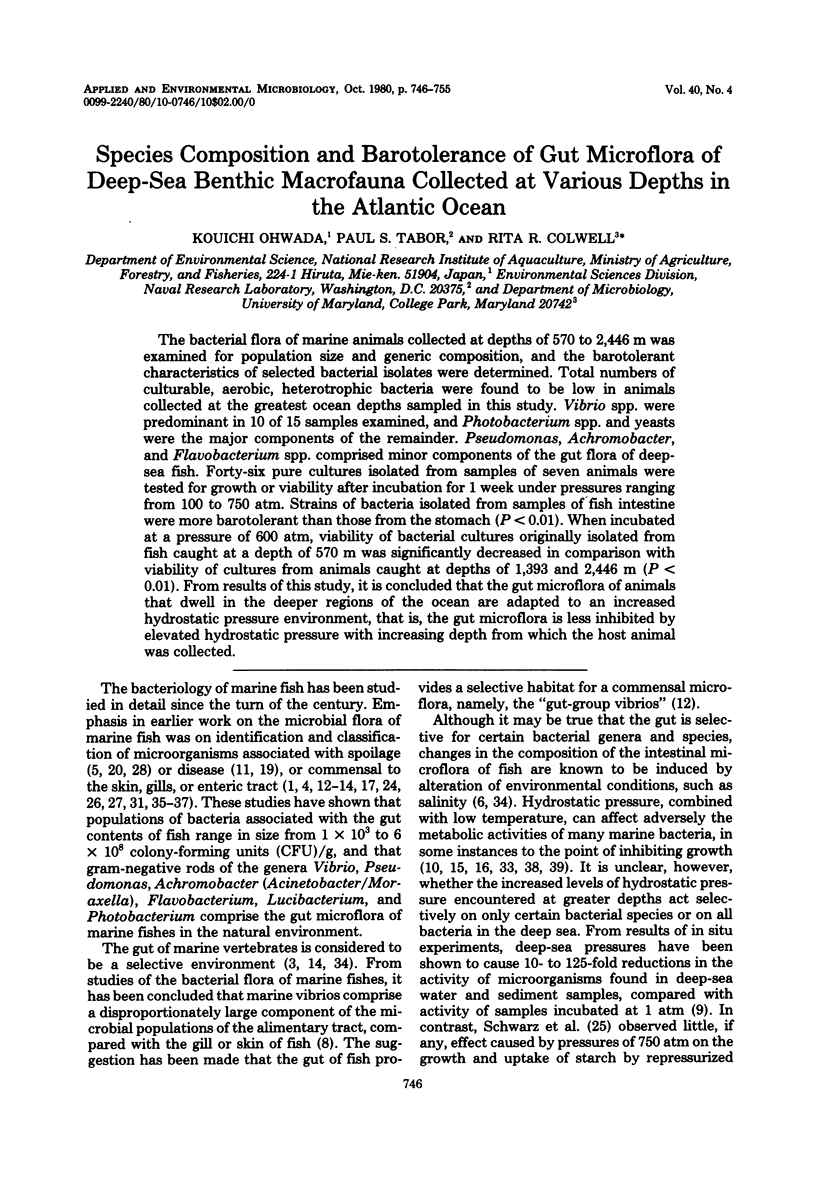
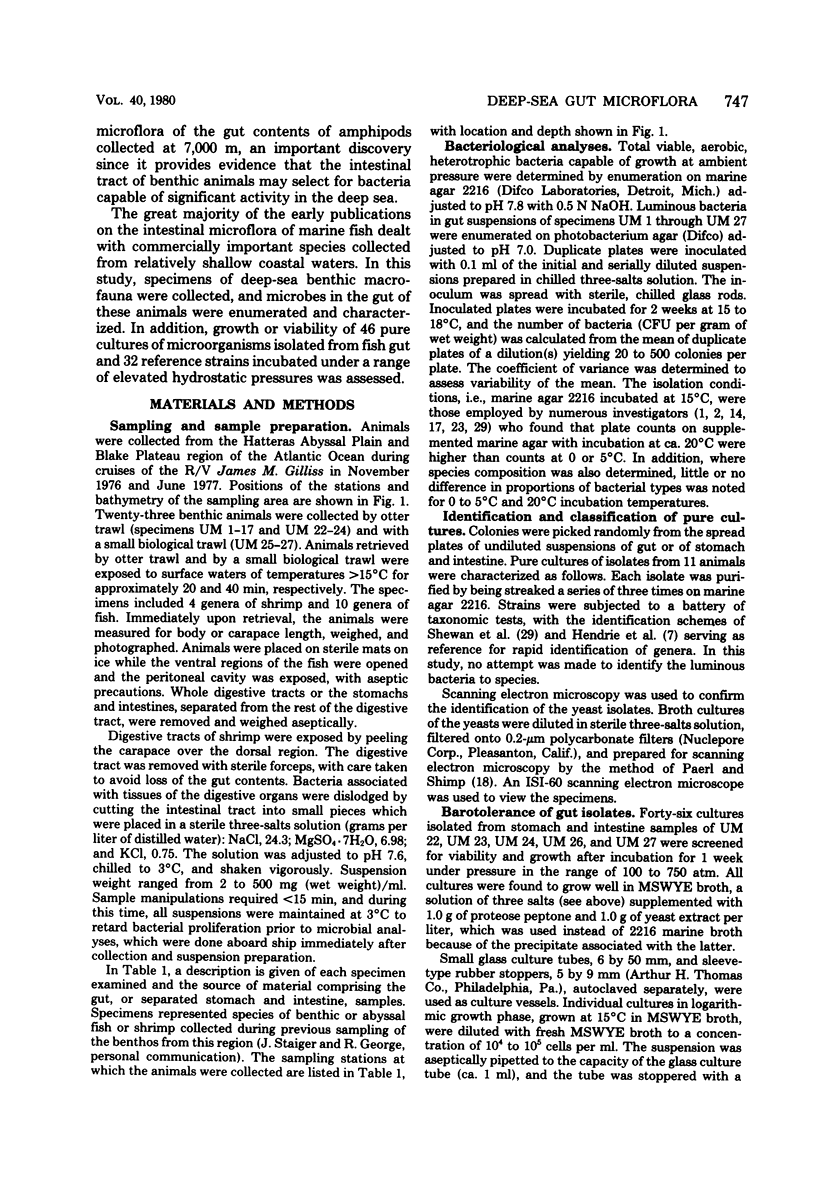
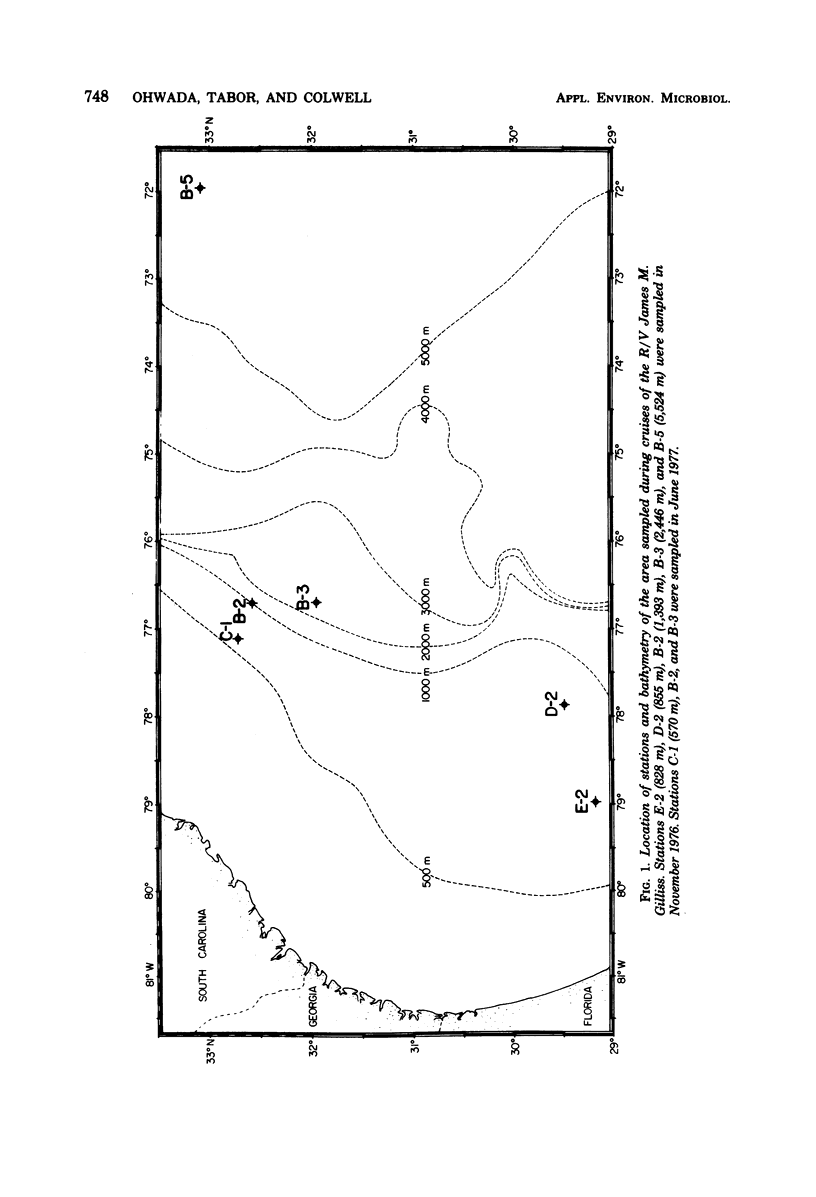
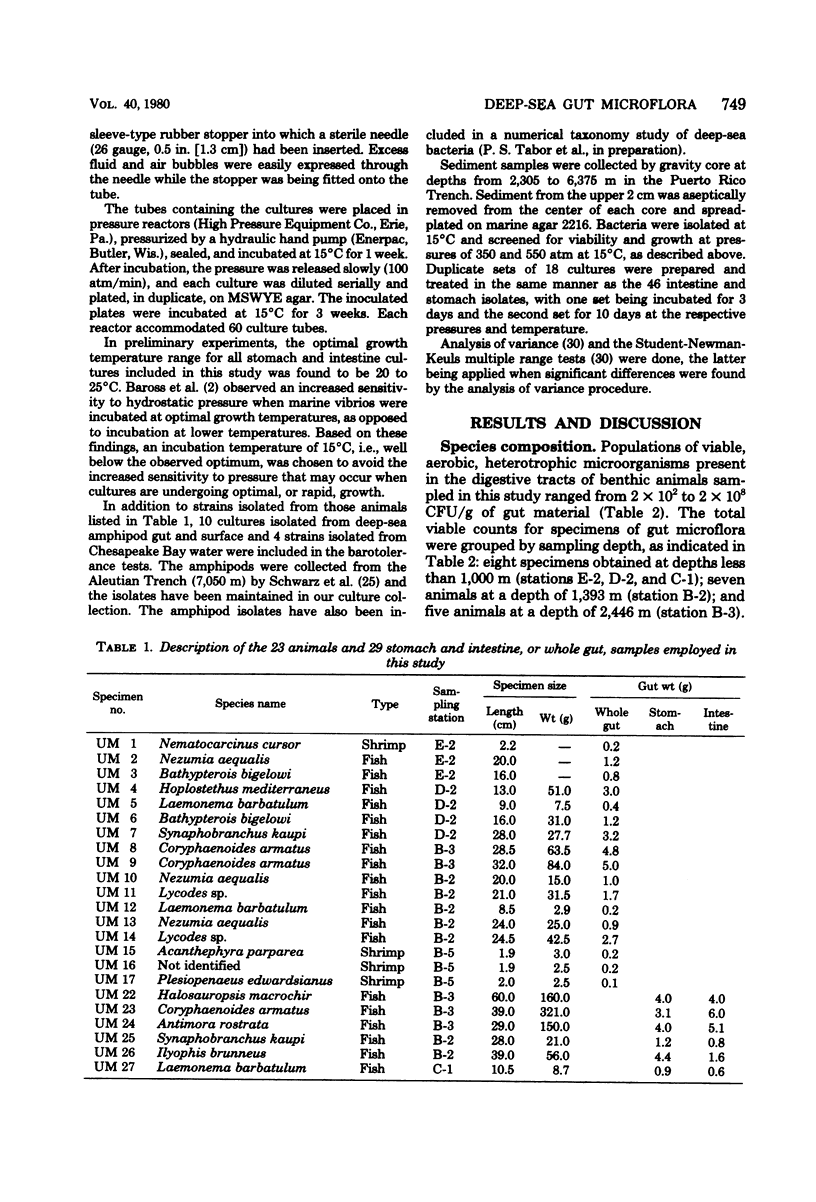
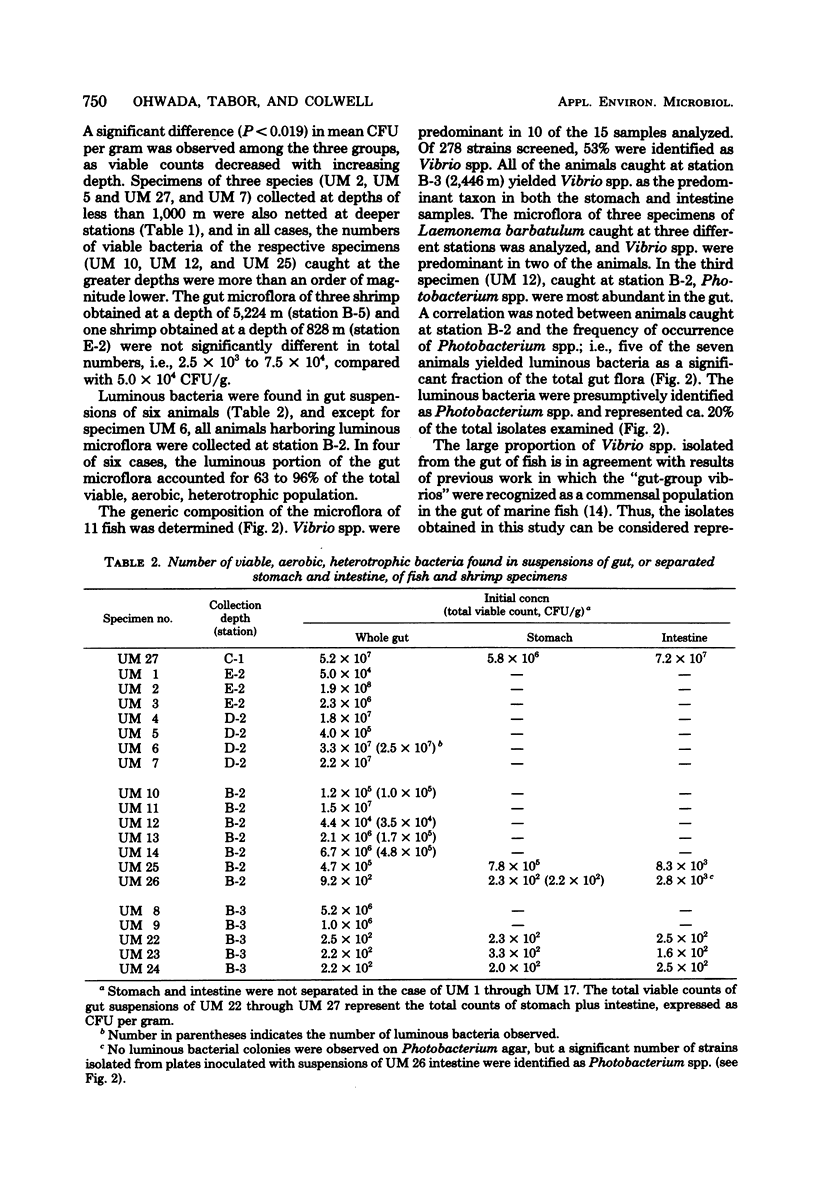

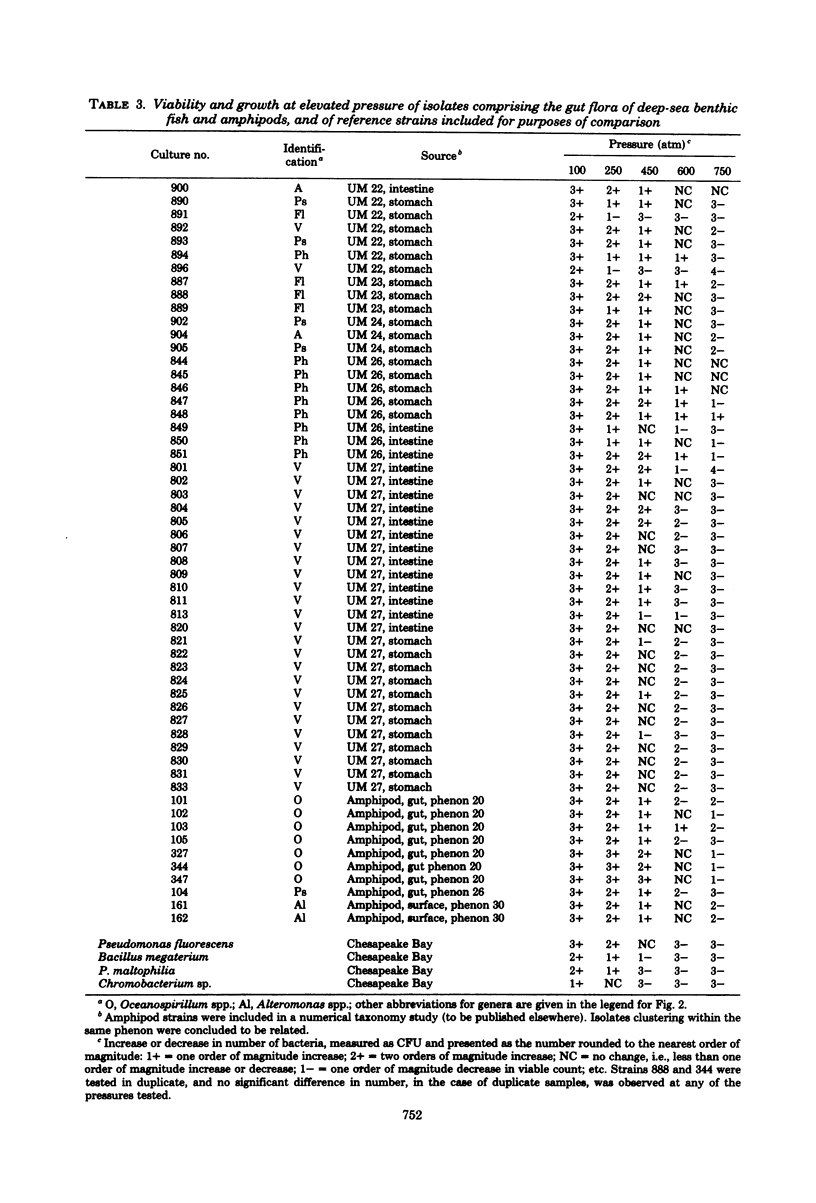
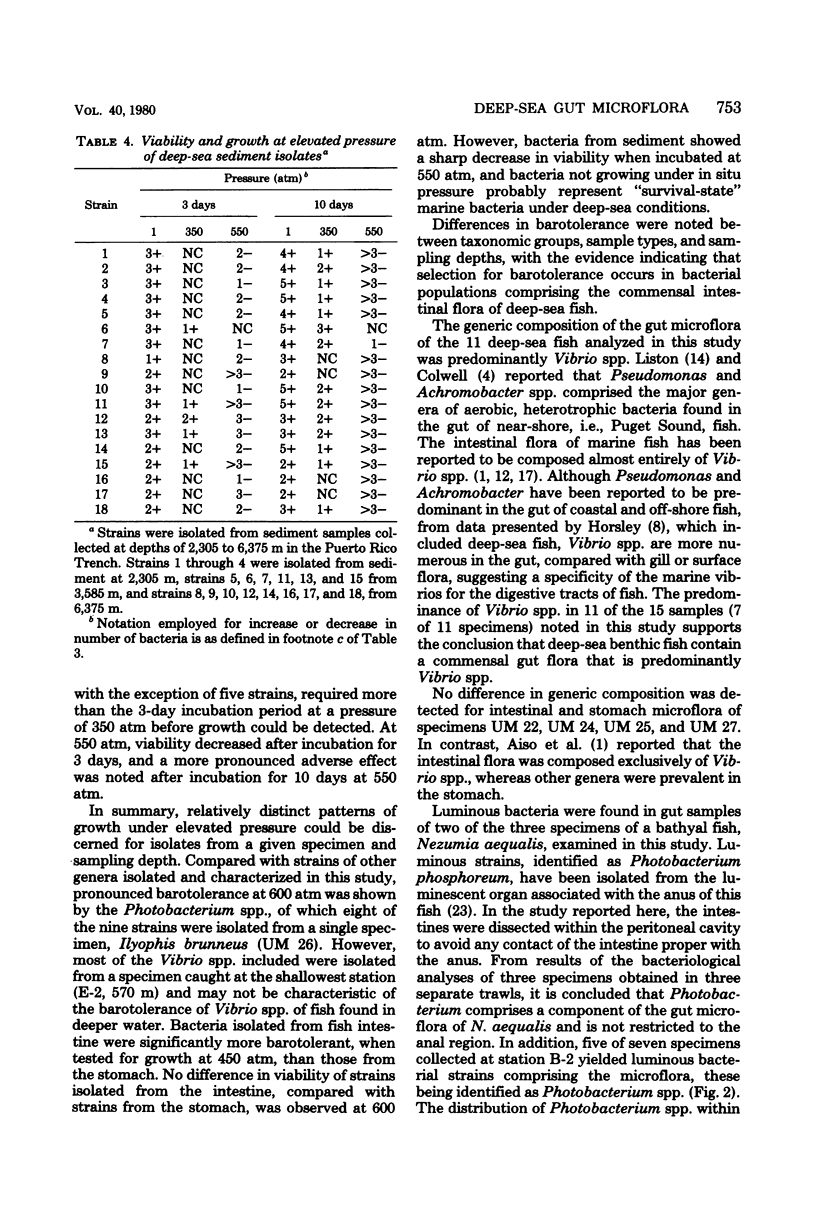


Selected References
These references are in PubMed. This may not be the complete list of references from this article.
- Jannasch H. W., Wirsen C. O. Deep-Sea Microorganisms: In situ Response to Nutrient Enrichment. Science. 1973 May 11;180(4086):641–643. doi: 10.1126/science.180.4086.641. [DOI] [PubMed] [Google Scholar]
- LISTON J. Quantitative variations in the bacterial flora of flatfish. J Gen Microbiol. 1956 Oct;15(2):305–314. doi: 10.1099/00221287-15-2-305. [DOI] [PubMed] [Google Scholar]
- LISTON J. The occurrence and distribution of bacterial types on flatfish. J Gen Microbiol. 1957 Feb;16(1):205–216. doi: 10.1099/00221287-16-1-205. [DOI] [PubMed] [Google Scholar]
- PREVOT A. R., THOUVENOT H., KAISER P. Etude de douze souches anaérobies pectinolytiques de l'intestin des poissons et des boues d'eau douce et salée. Ann Inst Pasteur (Paris) 1957 Oct;93(4):429–434. [PubMed] [Google Scholar]
- Schwarz J. R., Yayanos A. A., Colwell R. R. Metabolic activities of the intestinal microflora of a deep-sea invertebrate. Appl Environ Microbiol. 1976 Jan;31(1):46–48. doi: 10.1128/aem.31.1.46-48.1976. [DOI] [PMC free article] [PubMed] [Google Scholar]
- Shewan J. M. THE STRICT ANAEROBES IN THE SLIME AND INTESTINES OF THE HADDOCK (GADUS AEGLEFINUS). J Bacteriol. 1938 Apr;35(4):397–407. doi: 10.1128/jb.35.4.397-407.1938. [DOI] [PMC free article] [PubMed] [Google Scholar]
- Zobell C. E., Johnson F. H. THE INFLUENCE OF HYDROSTATIC PRESSURE ON THE GROWTH AND VIABILITY OF TERRESTRIAL AND MARINE BACTERIA. J Bacteriol. 1949 Feb;57(2):179–189. doi: 10.1128/jb.57.2.179-189.1949. [DOI] [PMC free article] [PubMed] [Google Scholar]


